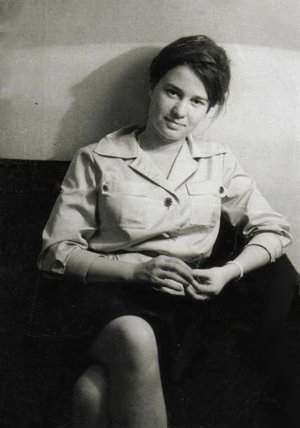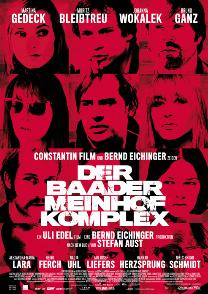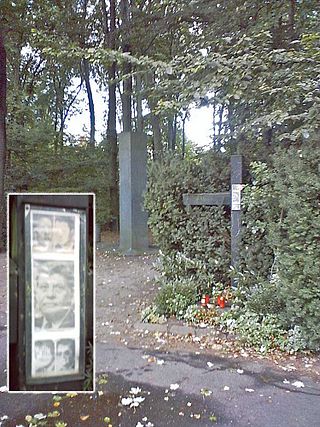Related Research Articles

The Red Army Faction, also known as the Baader–Meinhof Group or Baader–Meinhof Gang, was a West German far-left militant group founded in 1970 and active until 1998. The RAF described itself as a communist and anti-imperialist urban guerrilla group. It was engaged in armed resistance against what it considered a fascist state. Members of the RAF generally used the Marxist–Leninist term faction when they wrote in English. Early leadership included Andreas Baader, Ulrike Meinhof, Gudrun Ensslin, and Horst Mahler. The West German government considered the RAF a terrorist organization.

Ulrike Marie Meinhof was a German left-wing journalist and founding member of the Red Army Faction (RAF) in West Germany, commonly referred to in the press as the "Baader-Meinhof gang". She is the reputed author of The Urban Guerilla Concept (1971). The manifesto acknowledges the RAF's "roots in the history of the student movement"; condemns "reformism" as "a brake on the anti-capitalist struggle"; and invokes Mao Zedong to define "armed struggle" as "the highest form of Marxism-Leninism".

Gudrun Ensslin was a German far-left terrorist and founder of the West German far-left militant group Red Army Faction.

Berndt Andreas Baader, was a West German communist and leader of the left-wing militant organization Red Army Faction (RAF) also commonly known as the Baader-Meinhof Group.
Jan-Carl Raspe was a member of the German militant group, the Red Army Faction (RAF).
Irmgard Möller is a former member of the German terrorist group the Red Army Faction (RAF). Her father was a high school teacher, and before joining the RAF, she was a student of German studies.
Sieglinde Hofmann was a German militant and member of both the Socialist Patients' Collective and the Red Army Faction.

The Red Army Faction (RAF) existed in West Germany from 1970 to 1998, committing numerous crimes, especially in the autumn of 1977, which led to a national crisis that became known as the "German Autumn". The RAF was founded in 1970 by Andreas Baader, Gudrun Ensslin, Ulrike Meinhof, Horst Mahler, and others. The first generation of the organization was commonly referred to by the press and the government as the "Baader-Meinhof Gang", a name the group did not use to refer to itself.

Astrid Huberta Isolde Marie Luise Hildegard Proll was an early member of the Red Army Faction. She is a photo editor and published a book.
Ingrid Schubert was a West German terrorist and founding member of the Red Army Faction (RAF). She participated in the freeing of Andreas Baader from prison in May 1970 as well as multiple bank robberies before her arrest in October 1970.

Petra Schelm was a German founding member of the Red Army Faction (RAF). She trained as an urban guerilla in an Jordan and was killed in a shootout with the police in Hamburg in July 1971.
The Socialist Patients' Collective is a patients' collective founded in Heidelberg, West Germany, in February 1970, by Wolfgang Huber. The kernel of the SPK's ideological program is summated in the slogan, "Turn illness into a weapon", which is representative of an ethos that is continually and actively practiced under the new title, Patients' Front/Socialist Patients' Collective, PF/SPK(H). The first collective, SPK, declared its self-dissolution in July 1971 as a strategic withdrawal but in 1973 Huber proclaimed the continuity of SPK as Patients' Front.
Siegfried Hausner was a student member of the German Socialist Patients' Collective who was sentenced to three years imprisonment in 1972 for terrorist related crimes. When he was released in 1974, like many other former members of the SPK, he joined the Red Army Faction.

Stammheim Prison is a prison in Stuttgart, Baden Württemberg, Germany. It is situated on the northern boundaries of Stuttgart in the city district of Stuttgart-Stammheim, right between fields and apartment blocks on the fringes of Stammheim. The prison was built as a supermax prison between 1959 and 1963 and taken into operation in 1964.
Christian Klar is a former leading member of the second generation Red Army Faction (RAF), active between the 1970s and 1980s. Imprisoned in 1982 in Bruchsal Prison, he was released on 19 December 2008, after serving over 26 years of his life sentence.

The Baader Meinhof Complex is a 2008 German drama film directed by Uli Edel. Written and produced by Bernd Eichinger, it stars Moritz Bleibtreu, Martina Gedeck, and Johanna Wokalek. The film is based on the 1985 German best selling non-fiction book of the same name by Stefan Aust. It retells the story of the early years of the West German far-left terrorist organisation the Rote Armee Fraktion from 1967 to 1977.
Siegfried Haag was a member of the West German Red Army Faction (RAF). He became a leading figure of the second generation of the group.
Peter-Jürgen Boock is a German former terrorist of the Red Army Faction.

The kidnapping and murder of Hanns Martin Schleyer marked the end of the German Autumn in 1977.
Irene Goergens is a former member of the West German terrorist group, the Red Army Faction (RAF).
References
- ↑ J. Smith, André Moncourt, Bill Dunne, "The Red Army Faction: a documentary history", Kersplebedeb, 2009, p. 171
- ↑ Getler, Michael (18 November 1978). "Belgrade Frees 4 Terrorist Suspects Wanted by Bonn". Washington Post. Retrieved 23 December 2023.
- ↑ Germany may grant parole to terrorists, UPI on The Washington Times website — URL accessed on January 19, 2007
- 1 2 BBC News (2007-02-12). "Meinhof gang killer to be freed". Archived from the original on 2007-02-14. Retrieved 2007-02-12.
- ↑ "La bande à Baader hante toujours l'Allemagne" (in French). Le Figaro. 2007-01-24. Archived from the original on 2007-06-18. Retrieved 2007-02-12.. The statement is partially incorrect: Rudolf Hess served over 40 years in prison in the post World War II Allied system, but he was not convicted by a German court and did not serve time in a German prison. Most of the Nazis judged after the war were amnestied in the mid-1950s.
- ↑ On March 25, 2007 she was released from prison Une ancienne de la bande à Baader bientôt libérée Archived 2007-02-16 at the Wayback Machine , Le Figaro , February 13, 2007
